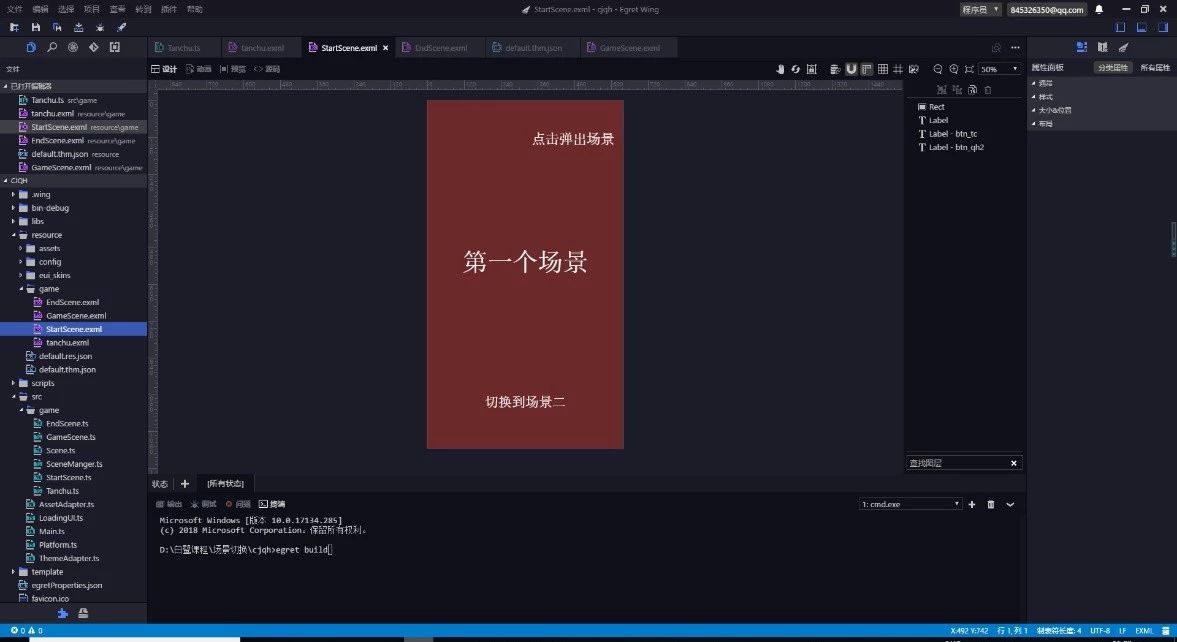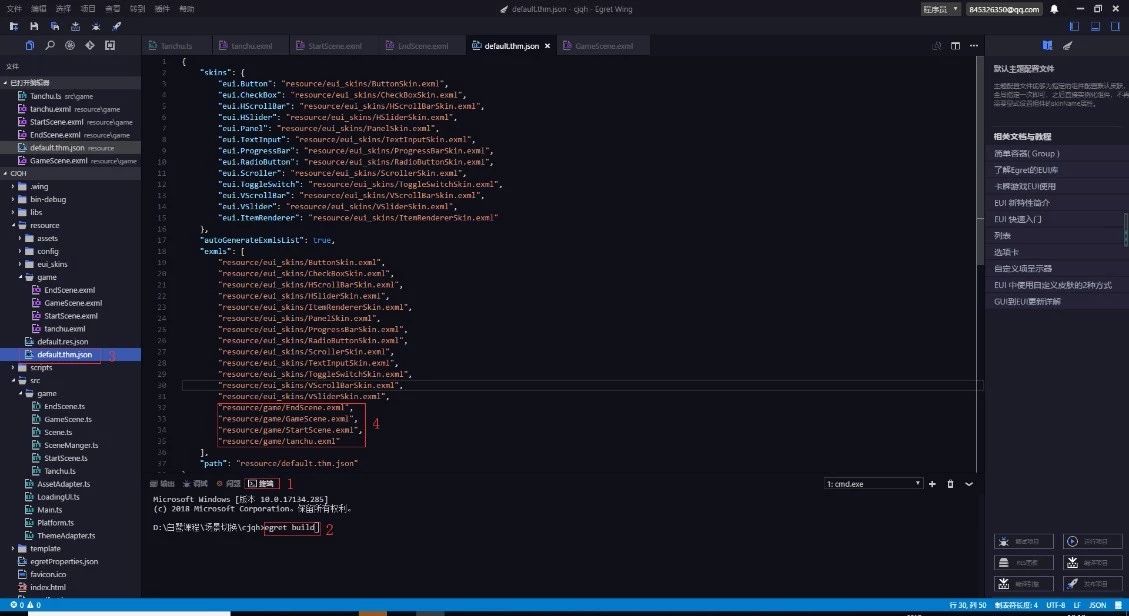场景切换是很多开发者在开发过程中必不可少的一个环节,当项目中有两个或两个以上的游戏场景时,怎样管理这些场景,能够使它们之间的切换更加方便呢?今天就为大家介绍场景切换管理类的切换方法和单例的使用方法。
案例源码:https://github.com/hkjlx/qhcj
首先创建一个所有场景的父类Scene
Scene类主要是为了方便管理场景,此类是一个抽象类,子类必须继承此类并实现onComplete()抽象方法才能进行场景的切换。
abstract class Scene extends eui.Component{ public constructor() { super(); // 监听组件创建完毕 也就是场景的外观创建完毕 this.addEventListener(eui.UIEvent.CREATION_COMPLETE,this.onComplete,this); } protected abstract onComplete(); }
场景管理器SceneManger
所有场景的切换,弹出关闭都是由SceneManger类来控制,这样方便对场景进行统一管理。
1.使用单例模式
SceneManger类需要使用到单例模式,单例模式是一种常用的软件设计模式,其定义是单例对象的类只能允许一个实例存在。
class SceneManager { private static _manager:SceneManager; public static get Instance(){ if( SceneManager._manager==null){ SceneManager._manager = newSceneManager(); } return SceneManager._manager; } public constructor() { } }
2.控制场景切换的方法
changeScene()方法:当舞台上有场景时,会先将当前场景从舞台移除,再添加新场景到舞台上;当舞台还没有场景时,会直接添加到舞台上。
public rootLayer:eui.UILayer;//起始场景 private currentScene:Scene;//需要显示的场景 private pop_scene:Scene;//弹出场景层 //切换场景 public changeScene(s:Scene){ if(this.currentScene){ this.rootLayer.removeChild(this.currentScene); this.currentScene = null; } this.rootLayer.addChild(s); this.currentScene = s; }
3.弹出场景和关闭弹出场景
弹出场景不会使底层场景消失,而是直接在当前场景上再显示一个场景出来(主要用于设置面板之类的)。
在弹出场景时先调用了一次关闭场景层,防止还没关闭场景层又点击了弹出场景层。
//弹出场景层 public pushScene(s:Scene){ this.popScene(); if(!this.pop_scene){ this.rootLayer.addChild(s); this.pop_scene = s; } } //关闭场景层 public popScene(){ if(this.pop_scene){ this.rootLayer.removeChild(this.pop_scene); this.pop_scene = null; } }
在入口文件 Main.ts 中引入场景管理类 SceneManage
首先将Main.ts中createGameScene()方法中的代码删掉,再调用下面的方法,将this定为起始场景(舞台)。
SceneManager.Instance.rootLayer = this;
使用eui创建三个场景和一个弹出场景
使用eui创建三个场景,分别为:开始场景(StartScene.exml),游戏场景(GameScene.exml),结束场景(EndScene.exml)。
下图示例为开始场景(StartScene.exml):

使用eui创建弹出层(TanChu.exml)。
下图示例为弹出场景:

eui文件创建完成之后需在终端中输入egret build编译项目,这时会在default.thm.json 文件中生成皮肤对应的skinName。

开始场景(StartScene.ts)、游戏场景(GameScene.ts),结束场景(EndScene.ts)对应的TS文件
由于StartScene类继承自Scene抽象类,所以在此类中必须得实现onComplete()方法,示例代码如下:
class StartScene extends Scene { public btn_tc: eui.Label;//弹出层按钮 public btn_qh2: eui.Label;//切换场景 public constructor() { super(); //指定开始场景对应的皮肤文件StartScene.exml this.skinName ="resource/game/StartScene.exml"; } //实现父类的onComplete方法 protected onComplete() { //设置两个Label为可点击 this.btn_tc.touchEnabled =true; this.btn_qh2.touchEnabled =true; //添加点击事件 this.btn_tc.addEventListener(egret.TouchEvent.TOUCH_TAP, this.onTaptc,this); this.btn_qh2.addEventListener(egret.TouchEvent.TOUCH_TAP,this.onTapqiehuan, this); } //弹出场景 private onTaptc(){ } private onTapqiehuan(){ } }
游戏场景(GameScene),结束场景(EndScene)对应的ts文件基本与开始场景一致。
可参考源码:https://github.com/hkjlx/qhcj
游戏初始化时在Main.ts中的createGameScene()方法添加开始游戏场景(StartScene),切换场景时调用SceneManager.Instance.changeScene()即可;注意:此处参数为一个场景实例。
let s1:StartScene = new StartScene(); SceneManager.Instance.changeScene(s1);
弹出场景层方法
在对应的点击事件中调用pushScene()方法。
let tc:Tanchu = new Tanchu(); SceneManager.Instance.pushScene(tc);//添加场景弹出层
如果需要关闭弹出场景层,在弹出场景层的类中调用popScene()方法。
SceneManager.Instance.popScene();//移除场景层
小结
本文主要讲解了场景切换管理类的切换方法和单例的使用方法,有任何技术问题或者觉得这篇文章对你有所帮助,欢迎留言与我们交流互动!